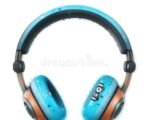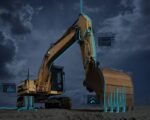Ottawa Infotainment, a key player in automotive software innovation, has just rolled out its Engineering Services Division. This fresh move targets Tier 1 suppliers struggling to keep pace with the surge in embedded software and hardware demands in modern vehicles. The announcement dropped alongside the company’s presence at AutoTech: Detroit, where they showcased their latest tech and expertise aimed at next-gen vehicle programs.
The new division aims to be a one-stop shop for Tier 1 suppliers — offering everything from embedded software development to custom hardware design, topped with safety-critical consulting. It’s about more than just meeting specs; it’s about delivering confidence, craftsmanship, and faster integration in a market where digital cockpits and connected cars reign supreme.
Meeting the Rising Bar for Automotive Software and Hardware
The automotive landscape is changing fast. Cars today are basically rolling computers, packed with software that controls everything from the dashboard display to critical safety systems. Tier 1 suppliers — the companies making the components that go into cars — face massive pressure to deliver complex, integrated systems that don’t just work but meet tough safety and compliance rules.
Sean Hazaray, Ottawa Infotainment’s CEO, explained it plainly: “OEMs and suppliers don’t just want code anymore. They want partners who get the bigger picture, who can craft solutions quickly, cleanly, and confidently.” And this new division is exactly that — a blend of engineering skill and industry know-how designed to get projects off the ground and running.
The division covers a broad range of services:
-
Developing embedded software on platforms like Android Automotive, QNX, and Linux.
-
Creating custom user interfaces with tools such as DiSTI GL Studio, Unity, Qt, Kanzi, and Crank Storyboard.
-
Integrating infotainment systems including Bluetooth, Wi-Fi, and media management.
-
Supporting telematics with LTE connectivity and custom platform integration.
-
Offering consulting on automotive-grade standards like ISO 26262 and ASIL compliance.
-
Engineering custom hardware for prototypes and full production.
It’s quite a spread, showing they’re serious about being a full-stack engineering partner.

Crafting the Backbone of Software-Defined Vehicles
Ottawa Infotainment isn’t new to this game. They’ve been quietly building and shaping embedded systems and bespoke automotive projects for years. Their work has made it into show cars and production programs worldwide, helping lay the groundwork for what’s now called Software-Defined Vehicles (SDVs).
Jon Hacker, the company’s CTO, puts it like this: “Embedded software is the backbone of today’s vehicles. But delivering it with the precision and reliability needed in automotive takes years — sometimes decades — of experience. That’s what we bring to the table.”
This expertise has now been bundled into a formal service offering ready for wider deployment. The new division can scale up, meaning they’re poised to meet the growing demand from suppliers and OEMs across North America and beyond.
Expansion Into the U.S. Market and Strategic Positioning
One of the notable parts of the announcement is Ottawa Infotainment’s plan to build a sales presence in the United States. This move makes sense given the company’s expanding North American customer base and the central role of the U.S. auto market in the global vehicle industry.
The engineering core remains in Ottawa, Canada, but having boots on the ground in the U.S. means quicker response times and better client relationships for American Tier 1 suppliers. It’s a classic case of proximity matters in tech partnerships.
Industry insiders suggest this move is a smart step. The U.S. automotive supply chain is hungry for partners who can provide turnkey embedded solutions, especially those who understand safety standards and can help accelerate vehicle programs without sacrificing quality.
Quick glance: The division’s core capabilities
| Capability | Description |
|---|---|
| Embedded software | Android Automotive, QNX, Linux platforms |
| UI/UX Solutions | DiSTI GL Studio, Unity, Qt, Kanzi, Crank Storyboard |
| Infotainment Integration | Bluetooth, Wi-Fi, media management |
| Telematics Support | LTE connectivity, custom/off-the-shelf platforms |
| Safety Consulting | ISO 26262, ASIL, NHTSA-compliant cluster dev |
| Custom Hardware Engineering | Prototyping, production ramp-up |
This table sums it up pretty well: a full suite aimed at fast, safe, and scalable embedded automotive solutions.
Why This Matters for the Automotive Industry
You might wonder, why now? Why is Ottawa Infotainment stepping up with this new division?
Well, cars are no longer just mechanical machines. The software inside them is becoming as critical as the engine itself. With electric vehicles, autonomous features, and connected systems on the rise, suppliers must deliver systems that integrate smoothly and meet high safety standards.
OEMs want reliable partners who can help reduce risk, speed up development, and avoid costly delays. Ottawa Infotainment’s move answers that call. Their promise of craftsmanship and expertise means suppliers can breathe easier.
Also, the timing is key — with industry events like AutoTech: Detroit highlighting innovation, companies need to demonstrate they’re future-ready. Ottawa’s launch aligns perfectly with this momentum, giving them visibility and a chance to lock in new partnerships.
The market will be watching closely. The pressure on suppliers will only grow. And those who can provide embedded software and hardware solutions with real safety know-how? They’ll be in high demand.








